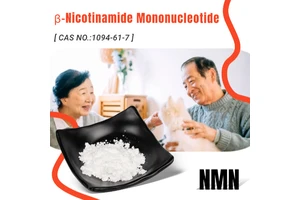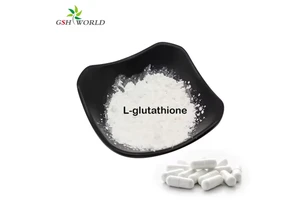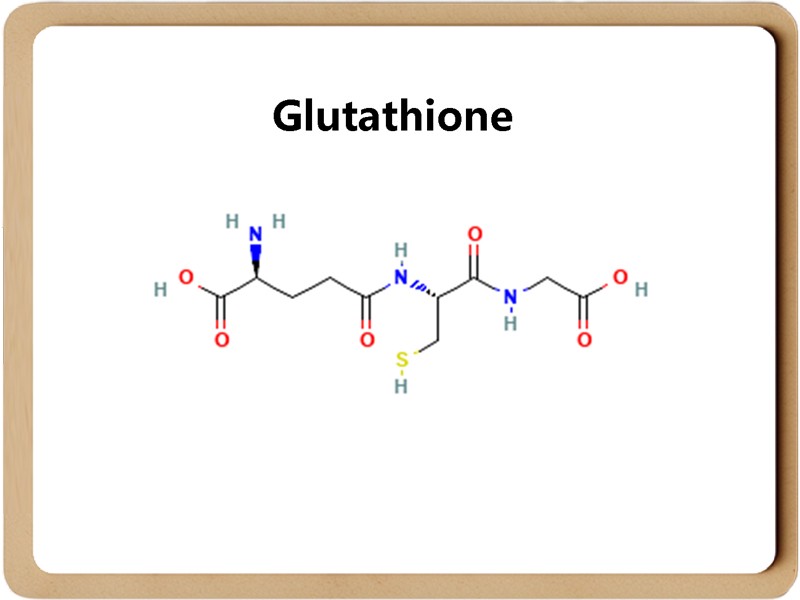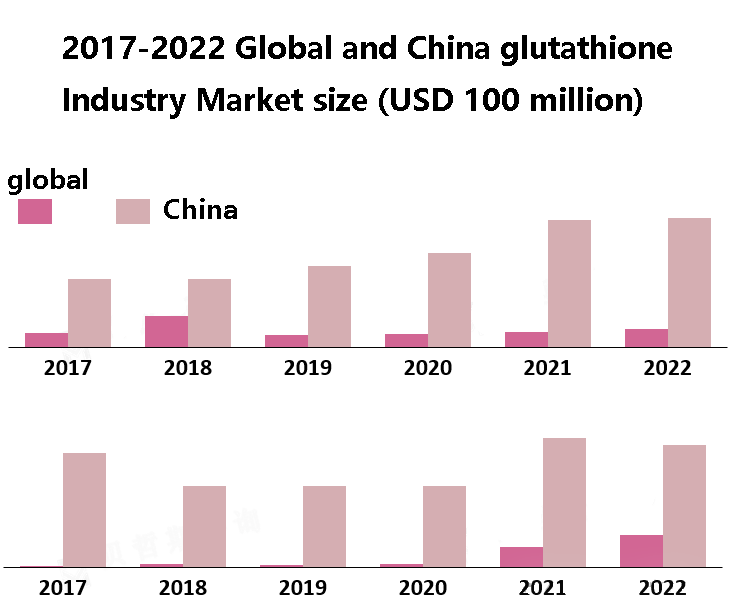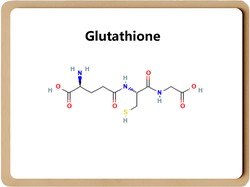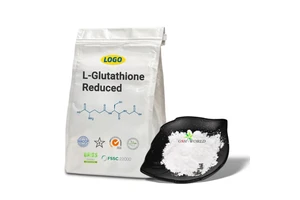Glutathione + amino acid metabolism hotspots are soaring high scores
This study aims to develop a prognostic model using long non-coding Rnas (lncRNAs) related to glutathione (GSH) metabolism to predict the prognosis of patients with lung adenocarcinoma (LUAD) and evaluate tumor immunity.
Researchers analyzed survival data from the Cancer Genome Atlas (TCGA), identified lncRNAs related to GSH metabolism through Pearson correlation analysis, constructed prognostic models using Cox and minimum absolute contraction and selection operator (LASSO) methods, and verified them through multiple analyses.
Functional analysis revealed the differences in immune infiltration and drug sensitivity, and in vitro experiments confirmed the role of lnc-AL162632.3 in LUAD.
It was ultimately determined that the model composed of 9 lncRNAs could effectively predict patient survival. High-risk patients have a higher burden of tumor mutations and stemness, providing a potential basis for personalized immunotherapy.
Research results
Figure 1 Research process

The author presented the flowchart of this study, including the identification of 16,876 lncRNAs from 541 cancer patient samples, the determination of 87 GSH-related genes, and the construction of a risk prognosis model through co-expression analysis, univariate COX analysis, and LASSO-COX analysis. And subsequent multiple functional experiments, immune infiltration analysis, tumor mutation burden analysis, drug sensitivity analysis, etc.
This flowchart presents the overall context and key steps of the research.
Figure 2 Identification of glutathione metabolism-related lncRNAs and construction of prognostic models
Through analysis, the author identified 1,748 lncRNAs related to GSH metabolism (Figure 2A).
After ten-fold cross-validation and LASSO-COX analysis, nine lncRNAs significantly associated with prognosis were identified (Figures 2B and C).
The author has drawn a heat map of the correlation between lncRNAs and gene sets (Figure 2D), demonstrating their relationship.
These results laid the foundation for the subsequent construction of prognostic models.

Figure 3 Survival analysis and verification
The author conducted a K-M analysis, and the results showed that the overall survival rate (OS) of high-risk patients in the training set, validation set, and overall cohort was significantly lower than that of low-risk patients (Figure 3A-C).
The results of progression-free survival (PFS) analysis were consistent with those of overall survival (OS) (Figure 3D).
The risk curve indicates that the risk score is positively correlated with the patient mortality rate. Moreover, as the risk score increases, the expression of some lncRNAs such as AL162632.3 increases, while the expression of some lncRNAs such as AL078590.2 decreases (Figure 3E-G).
These results indicate that the constructed risk model can effectively distinguish the survival conditions of patients with different risks.

Figure 4 Independent prognostic analysis and PCA analysis
The author conducted univariate and multivariate Cox regression analyses, demonstrating that the hazard ratio (HRs) of the model exceeded 1, with a highly significant p-value (Figures 4A and B).
ROC curve analysis indicated that the AUC and C-index values of this prognostic model in predicting the prognosis of patients were both higher than those of clinical factors (Figure 4C-E).
PCA analysis showed that the developed lncRNA model could distinguish patients very well (Figure 4F-I).
These results verify the independence and predictive ability of the model.

Figure 5 Development and verification of nomogram
The author constructed a clinical nomogram (Figure 5A), with each clinical factor having a corresponding score. The total score can be used to estimate the survival probabilities of patients at 1 year, 3 years, and 5 years.
The author plotted a calibration curve (Figure 5B) to verify its predictive accuracy and conducted OS analysis on patients at different cancer stages. The results showed that high and low risk scores could significantly distinguish the survival duration of patients in both early and advanced stages (Figures 5C and D).
Nomograms are helpful for personalized prognostic stratification of LUAD patients.

Figure 6 Gene Function enrichment analysis
The author conducted a difference analysis on the high-risk and low-risk groups and identified 447 significant genes.
GO functional analysis indicated that the differentially expressed genes were mainly concentrated in aspects such as immune cell infiltration, immune activation, extracellular matrix remodeling, and cytokine-cytokine receptor interaction (Figures 6A and B).
KEGG pathway analysis revealed that these genes were enriched in pathways regulating immune cells, such as the ras signaling pathway and the pi3k-akt signaling pathway (Figure 6C).
GSEA analysis indicated that the majority of lncRNAs in the model were associated with cancer, immune, and metabolism-related pathways (Figure 6D).
These results reveal the potential mechanism by which key lncRNAs affect the survival prognosis of LUAD.

Figure 7 Immune correlation analysis
The author presented the proportion of typical immune cells in a sample of LUAD patients (Figure 7A). Through multiple algorithm analyses, it was found that the immune cell scores and overall estimated scores in the TME of high-risk patients were lower than those of low-risk patients. And there are significant differences in classical immune functions such as type II IFN response, type I IFN response, HLA, etc. (Figure 7B-E).
The author analyzed and concluded that the risk score was positively correlated with tumor stemness (Figure 7F).
These results indicate that the risk score is closely related to immune function and tumor stemness.

Figure 8 Detection of tumor mutation burden (TMB)
The author's analysis revealed that the mutation rates of key genes such as TP53, KRAS, and COL11A1 were higher in the high-risk group (Figures 8A and B), and the tumor mutation burden in the high-risk group was significantly higher than that in the low-risk group (Figure 8C).
Kaplan-Meier analysis showed that the survival period of patients with high TMB was significantly longer than that of patients with low TMB (Figure 8D).
The patients were grouped according to risk score and TMB level to analyze the survival differences. It was found that the survival time was the longest in the high-TMB and low-risk groups, and the shortest in the low-TMB and high-risk groups (Figure 8E).
The TIDE score of the high-risk cohort was significantly decreased (Figure 8F).
These results indicate that TMB is closely related to risk scores and patient survival, and the high-risk group may have different responses to immunotherapy.

Figure 9 Drug sensitivity analysis
The author used the oncoPredict software package to screen for potentially sensitive drugs. The results showed that there were significant differences in the IC50 values of drugs such as cisplatin, docetaxel, gemcitabine, vinorelbine, and paclitaxel (Figure 9).
This provides a reference for the personalized selection of chemotherapy drugs for patients with lung adenocarcinoma.

Figure 10 Verification of lncRNAs expression in vitro cell experiments
The author verified the expression levels of lncRNAs with independent prognostic significance through qPCR.
Compared with the normal cell line HBE, the expression of AL162632.3 was significantly increased in PC9, H1299, A549 and H1975 cancer cell lines, and was most obvious in H1299 cells.
The expression of LINC01711 is elevated or decreased in some lung cancer cell lines.
The expression of GSEC showed no significant change in these cancer cell lines.
AC026355.2 was significantly downregulated in all four cancer cell lines.
The expression of AL096701.4 decreased in some cell lines and increased in H1975 (Figures 10A and B).
These results verified the expression differences of lncRNAs in different cell lines in the model.

Figure 11 Down-regulation of lnc-AL162632.3 inhibits LUAD growth
The author effectively knocked down lnc-AL162632.3, which was highly expressed in the H1299 and A549 lung cancer cell lines, using RNAi technology. The CCK8 proliferation and colony formation experiments demonstrated that knocking down lnc-AL162632.3 significantly reduced cell growth (Figures 11C, D, E, F).
These results indicate that lnc-AL162632.3 has a promoting effect on the growth of lung cancer cells.

Figure 12 Down-regulation of lnc-AL162632.3 inhibits LUAD migration and invasion
The author further demonstrated through wound healing and invasion experiments that inhibition of lnc-AL162632.3 significantly weakened the motility of cancer cells (Figures 12A, B, C).
In vivo experiments showed that the subcutaneous tumor volume and weight of nude mice knocked down with lnc-AL162632.3 were significantly smaller than those of the control group (Figure 12D-F).
These results indicate that lnc-AL162632.3 plays an important role in the migration and invasion of lung cancer cells.

Research Summary
This study focuses on lung adenocarcinoma and aims to explore the role of long non-coding Rnas (lncRNAs) related to glutathione (GSH) metabolism.
Researchers obtained data from the TCGA database and, through a series of analyses, identified nine lncRNAs related to GSH metabolism and constructed a prognostic model.
This model can effectively predict patient survival. High-risk patients have a higher burden of tumor mutations and stemness.
Functional analysis revealed that key lncRNAs are related to immune regulation. There are differences in the composition and function of immune cells between the high-risk and low-risk groups, and their sensitivities to chemotherapy drugs are also different.
In vitro experiments confirmed that lnc-AL162632.3 promotes the proliferation, migration and invasion of lung cancer cells.
Although the research has limitations, this model and related findings provide a potential basis for personalized immunotherapy of lung adenocarcinoma and help improve the prognosis of patients.


